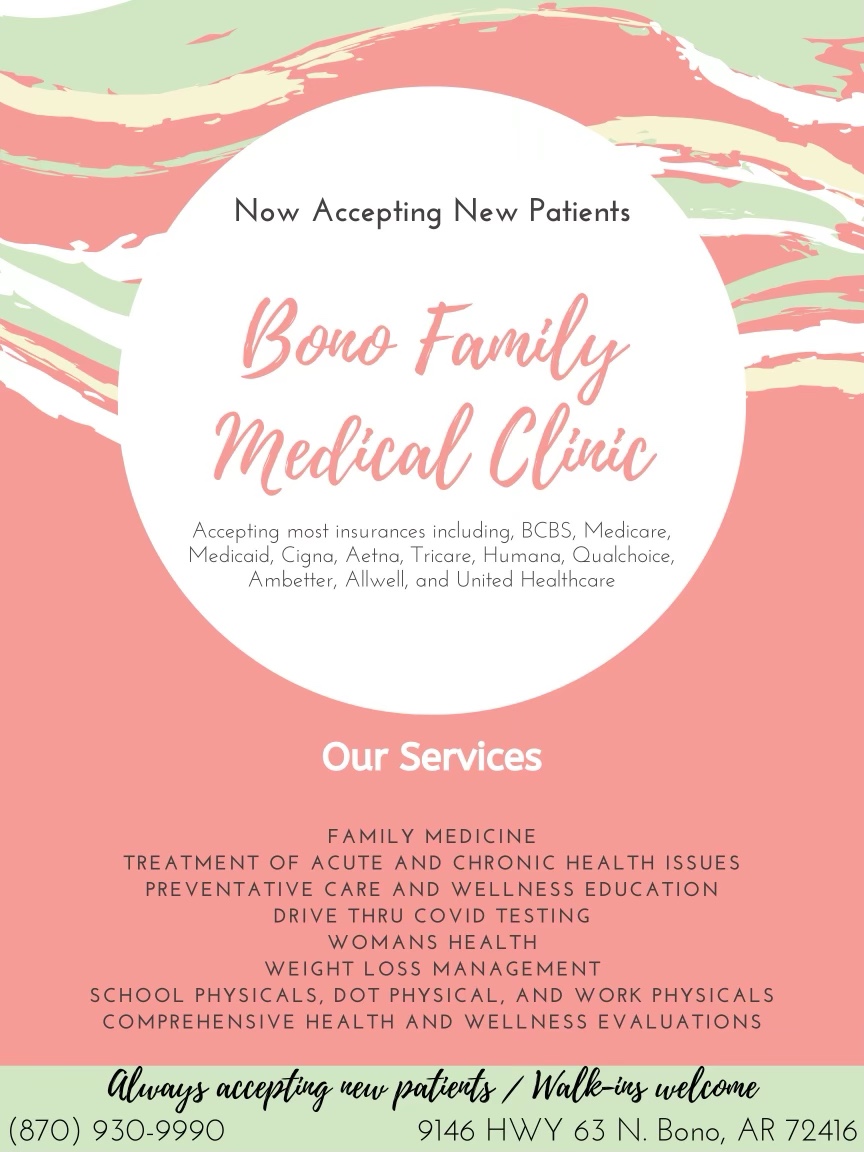
by Tess Vrbin, Arkansas Advocate
Northeast Arkansas on Friday became home to the state’s first federally designated “rural emergency hospital,” and now, small hospitals across the state must decide if they should reduce or give up inpatient care to follow suit.
St. Bernards Five Rivers Medical Center in Pocahontas, part of the St. Bernards Healthcare system based in Jonesboro, is the first Arkansas hospital to opt into the rural emergency hospital designation, established in 2021 by a federal law and adopted in Arkansas earlier this year.
The designation is meant to attract more funds to rural hospitals from the federal Centers for Medicare and Medicaid Services (CMS), but they must reduce or eliminate inpatient services and focus on emergency and outpatient treatment.
Act 59 of 2023 has been in effect since February. Mellie Bridewell, CEO of the Arkansas Rural Health Partnership, said at the time that rural hospitals would likely take several months to figure out if rural emergency status would be a net gain for both the facilities and their communities.
Bridewell said last week that Five Rivers’ affiliation with St. Bernards is an advantage to the area it serves. Other rural hospitals throughout the state must consider their community’s unique circumstances to determine if eliminating inpatient beds would have an overall negative impact on the areas they serve, she said.
“Forcing patients and their families to receive in-patient care miles away is difficult for the patient and even harder on the families that may work hourly jobs and can’t afford to take off work to visit a loved one,” Bridewell said.
Every hospital’s finances, resources and patient volume are different, and all are important factors in whether a hospital would benefit more from a new reimbursement model or from maintaining their current model, said Anna Anna, project director at the Rural Health Redesign Center, a national organization that advises rural healthcare providers for free on how to meet community needs and remain financially stable.
“Health care in rural America is challenging, and this designation is not for all, but it will provide a pathway forward for a lot of struggling rural hospitals to survive,” said Anna, who is a nurse and the former CEO of a rural Pennsylvania hospital.
Most Arkansas counties have only one hospital, and some have no hospital at all. Federal aid subsidized hospitals nationwide during the COVID-19 public health emergency, but the end of this financial windfall in May has left rural hospitals concerned about their financial stability, said Brian Miller and David Mantz, the CEOs of the hospitals in DeWitt and Fordyce, respectively. Both are currently considering the pros and cons of rural emergency status.
Anna said hospitals with daily patient censuses fewer than five are likely to consider rural emergency status a worthwhile change.
Dallas County Medical Center’s daily census is roughly 1.5, Mantz said. If the hospital signs up for rural emergency status, it will get public input first, he said.
“We want to be transparent and for people to know what our options are,” Mantz said.
Criteria and reimbursement
The federal Consolidated Appropriations Act of 2021 established rural emergency status, and a CMS rule detailing rural emergency criteria went into effect Jan. 1.
Patients’ average stay over the course of a year must be no more than 24 hours, under the criteria. St. Bernards Healthcare spokesman Mitchell Nail said the average stay at Five Rivers is already “well below” this limit.
Rural emergency hospital licensure criteria also include:
- Keeping emergency departments staffed 24 hours per day and seven days per week with a physician, nurse practitioner, clinical nurse specialist, or physician assistant.
- Maintaining a transfer agreement with a Level I or Level II trauma center in Arkansas, Missouri or Tennessee.
- Paying an annual licensing fee of $500 to the Arkansas Department of Health.
CMS subsidizes critical access hospitals — which have no more than 25 beds and are usually located no less than 35 miles from other hospitals — for inpatient treatment of Medicare recipients. Arkansas has 28 critical access hospitals, including the facilities in DeWitt and Fordyce, which have 25 beds each.
Critical access hospitals will be allowed to keep the designation if they apply for rural emergency status, according to Act 59.
Insurance providers don’t completely cover the costs of care at critical access hospitals, and rural emergency status would eliminate cost-based coverage and raise Dallas County Medical Center’s outpatient fee schedule by 5%, Mantz said.
Losing the current reimbursement mechanism would cost the hospital some money, so rural emergency status would not lead to a net increase in revenue, but stronger outpatient care might serve the community better overall, Mantz said.
“People really want to be taken care of at home if they can be, and this would definitely make us focus on services that line up with value-based ideas, where you’re spending less and getting a good outcome,” he said.
Act 59 also allows hospitals with up to 50 beds to receive rural emergency designation and the resulting funds.
Five Rivers has 40 beds, and St. Bernards wanted to take the opportunity to bring in more Medicare funds without eliminating beds to become a critical access hospital, Nail said.
Until now, Five Rivers was a prospective payment system (PPS) hospital, meaning it received Medicare reimbursements based on predetermined amounts. Five Rivers will now receive an additional 5% reimbursement rate for outpatient services, plus a “standard monthly facility payment,” according to last week’s press release announcing the change to rural emergency status.
Five Rivers will also retain its entire staff after the transition, which Nail said was a priority.
Other hospitals that choose rural emergency status might not be able to retain all their staff, Bridewell said.
“Jobs anywhere from nursing to front desk and food service that currently exist in the hospital will be reduced, if not eliminated,” she said. “We need to be working with the organizations to ensure transition for these workers.”
Revenue and resources
Inpatient care has made up the majority of Five Rivers’ operating costs but only 5% of its patient volume, and “ultimately that’s not a sustainable model,” Nail said.
Rural hospitals already spend much of their time and resources on outpatient care, which includes transferring patients with specific needs to hospitals with more beds and specialized care, Anna said.
State Rep. Lee Johnson, R-Greenwood, made the same point earlier this year while sponsoring the bill that became Act 59, citing his experience as a physician.
Dallas County Medical Center in Fordyce brings in 94% of its revenue from outpatient services, Mantz said.
Not only is Dallas County one of the least populous counties in the state, but three of its neighboring counties do not have hospitals. A widespread but limited patient base and a shrinking total population leads to limited hospital revenue, Mantz said, and Dallas County Medical Center is working with the Rural Health Redesign Center to determine the potential benefits of rural emergency status.
“I think this is where healthcare is looking [at going],” Mantz said. “It lines up with the need for potentially creating a sustained system overall, and we want to be on the front end, not the back end, which is why we’re making this assessment.”
Dallas County Medical Center has no current deadline for its decision of whether to apply for rural emergency status, Mantz said.
DeWitt Hospital and Nursing Home, which Miller runs, plans to consider the option, but has not yet met with the Rural Health Redesign Center. The organization analyzes hospitals’ finances in groups, and DeWitt Hospital is waiting in line, Miller said.
He added that the rural emergency application process “seems to be fairly unknown and long and drawn out at this point,” and he hopes the Rural Health Redesign Center can provide clarity.
“There’s a ton of information about what it means for the hospitals,” Miller said. “You lose this, you gain that, all that is available, but then the question is: Who do I turn the application into, and who starts the process?”
Meanwhile, Five Rivers opened a non-chemotherapy infusion center and a heart and nephrology clinic in Pocahontas earlier this year. Nail said St. Bernards saw both projects as worthwhile investments because of the impending financial changes resulting from rural emergency status.
“The most important thing is that this is not about services that are being taken away,” Nail said. “It is about evolving to the needs of the local community.”















Be the first to comment